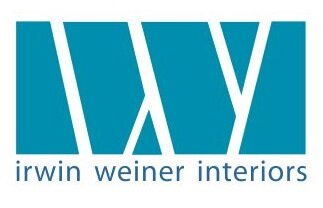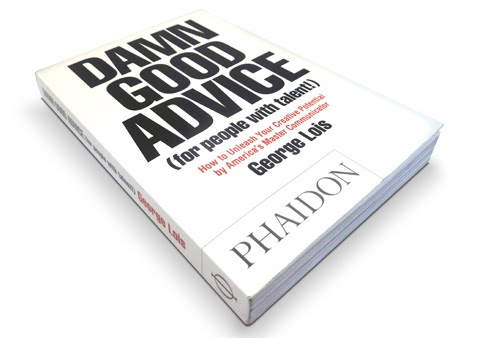5 Business Books Secretly Written for Interior Designers
Jay Johnson - A balanced diet consists of selections from different food groups, artfully juggled to avoid culinary boredom, and served up several times a day. But what if you decided to go with your favorite food and you only ate ice cream at each meal? You’d likely be bored to death, and soon find yourself very unhealthy.
Let’s compare your diet to your reading habits. Is what you read well balanced, too? There are sayings for both diet and reading that converge here:
- You are what you eat.
- You are what you read.
- Garbage in, garbage out.
If you're a home design fan, we can make a great case for reading the latest shelter magazines and designer coffee table books, and reaching into the past for inspirational guides to all facets of design—but if that’s all you’re reading, it’s akin to pigging out on ice cream. (Note: I love ice cream and I love interior design, so the two are directly related, and I challenge anyone to claim otherwise!)
My design partner Irwin Weiner and I came up with a non-traditional reading list of business books that we think were secretly written for the design industry. They share these traits: keen insights into the kind of behaviors we deal with daily, helpful tips for running and maintaining a successful business while keeping your creative edge, and a wicked sense of humor (without which, we would all dry up, curl into a fetal position, and continually suck our thumbs).
1. Damn Good Advice (for people with talent!). Advertising legend George Lois, considered by some to be the model for the Don Draper character in Mad Men, talks in short one- and two-page nuggets of business advice that even the busiest design lover or overall creative person can digest. I call this a “popcorn book,” because you can delicately pick out one nugget of advice at a time or consume the whole tub in one reading. Lois’ sense of humor is razor-sharp, and this is a stimulating read. The goal of the book is to “unleash your Creative Potential.” Typical quote: “There are only four types of person you can be. Identify yourself: 1. Very bright, Industrious (You’re perfect.). 2. Very bright, Lazy (A damn shame.). 3. Stupid, Lazy (You’ll just sit on your ass, so you’re a wash.). 4. Stupid, Industrious (Oh, oh, you’re dangerous.). If you’re a number 1 or a 2, you’ll get a lot out of this book. If you’re a number 3 or 4, why are you reading this book?”
2. UnMarketing: Stop Marketing. Start Engaging. Author Scott Stratten is an expert in viral and social media, music marketing, sales training, and “authentic” marketing. One of his stories is about how a carpet cleaning man at the Wynn Hotel in Las Vegas stopped what he was doing, looked him directly in the eye; gave him a friendly, natural smile, and welcomed him to the Wynn; that honest connection showed Stratten that the Wynn had more than any other hotel on the Vegas Strip, even though all the mega-hotels have basically the same amenities. The personal greeting was what made him choose to stay there. Stratten’s take-away message for interior designers is to avoid marketing to potential clients in ways we hate being marketed to ourselves (cold calls, ads, flyers, etc.). His book will help to position a designer as a trusted expert in front of a potential market of decorating clients so that when they need to hire someone, they’ll choose you.
3. Fascinate: Your 7 Triggers to Persuasion and Captivation. Sally Hogshead, an advertising brand executive, maps out seven ways to get people to be fascinated with you enough to hire you. This slim volume is a quick read, but the ideas it presents will be like bottle rockets going off in your head for days. The triggers themselves are fascinating: lust, mystique, alarm, prestige, power, vice, and trust. Each has to do with how to fascinate clients and how to sell your clients on being fascinating to others by getting the kind of interiors only you can help them create. One could have some devilish fun knowing what triggers to pull with others—and knowing that we all respond to these triggers all the time, without realizing it. This would also make a great dating guide, come to think of it!
4. Unthink: Rediscover Your Creative Genius. First, how did Erik Wahl, a graffiti artist, become a leader in business thinking? Seems farfetched, but we know that creative ideas and good business sense must co-exist—unless you’d like to work pro bono. The books helps you push beyond traditional thought patterns and being logical all the time. Wahl says, “Our greatest personal potential is reached when unbridled imagination is applied with critical competence and when business acumen is embodied with artistic finesse.” This book could change the way you organize your office, schedule, and patterns with clients. It will challenge you to live life in a more creative, childlike way.
5. Difficult Conversations: How to Discuss What Matters Most. Every interior designer and design client will recognize some of the situations covered in this practical guide written by the team behind the Harvard Negotiation Project. Their goal is to help readers handle tough conversations “with less stress and more success.” Personally, you can improve relationships with co-workers and spouses. Professionally, move clients you’d love to fire—but somehow never manage to handle effectively, once and for all—away from emotion and towards productive problem solving.
So that’s our short list of recommendations. We should note that it’s also important to read recreationally, too: news, sports, literary fiction, science fiction, cookbooks, murder mysteries—anything that will make you a more juicy and interesting person. Most everyone in the design industry wants to relate to real people who have opinions and ideas and stories outside of the field, not design robots … or people who only eat ice cream. Let's broaden our horizons!





